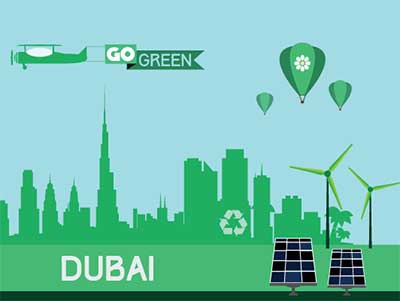
While there have been endless discussions about the benefits of energy conservation over the past few years, from ensuing savings to saving the planet, there have been few live examples where the strategy has borne fruit.
Taking a lead in this respect, Emrill, a UAE-based integrated facilities management provider, together with its energy solutions arm Emrill Energy, have announced the results of the first 12 months of a pilot energy-efficiency scheme for the Dubai Marina Towers residential complex, reporting 26 per cent energy savings for the year. This makes it the first successful and sustainable building initiative for energy conservation, not only in UAE but also across the region. Full-year savings of the project are anticipated to be approximately Dh3.5 million.
Beyond the significant financial savings, this also includes a major reduction in total emissions, equivalent to 4,256 metric tonnes of CO2 equal to a passenger car driving 21 million km.
Case study: making energy efficiency work
PW met with Stuart Harrison, technical director of Emrill Services, at the recently concluded FM Expo, to discuss project highlights, right from Emrill’s funding strategy to the phased execution and rigorous monitoring. The case study carries excellent pointers and best practice learning for facilities management (FM) industry players, as well as developers and owners of buildings.
Site details
The Dubai Marina Towers development is a large residential complex in Dubai Marina that includes six residential tower — Al Murjan, Al Mass, Al Fairooz, Al Mesk, Al Yass and Al Anbar, retail areas and associated amenities.
The challenge, says Harrison, is to reduce energy consumption and increase energy efficiency without compromising on the comfort of the residents.
Action plan
• Conducted feasibility study and audit to understand where the building stands with its equipment and their efficiency and operating modes.
• Identified key areas where significant reductions in net-energy usage and costs could be achieved through changes and improvements.
• Top areas included chillers, air-handling units, building management and lighting systems and controls.
• Suggested a shared savings scheme, where Emrill covered all upfront costs, making money only once the resultant savings are realised, shared between both parties. This guarantees successful savings for building owners and managers.
• Began retrofit works using innovative green building retrofit techniques and implemented a range of energy-efficiency upgrades.
• Handed over the building in March. Continuous management and improvement of the new systems is being undertaken by Emrill Energy over the past year, producing savings surpassing original forecasts.
Delivered results
The project logged an impressive average energy savings of 26 per cent over 12 months. However, added benefits of the energy-efficiency initiative include extended life cycles of the equipment due to lower plant and equipment operating times, further reducing expenses by reducing the need for costly repair and replacement.
Highlights
• The retrofit work was completed without disruption to tenants. Harrison found the “people” part of the project most challenging. “Managing expectations of residents and building owners, while ensuring there is no compromise on the sustainability efforts was a tough balance,” says Stuart. “The moment you change someone’s environment where they spend a lot of time in, they immediately notice it, so it is essential to ensure comfort levels are maintained.
“In addition, once people know you are making some changes, then anything and everything that goes wrong with their environment, even if it is a routine maintenance issue, is linked back to the project changes.”
Given the towers are located in a premium residential area and were fully occupied at the time of execution, it was essential for Emrill to plan each stage for a seamless execution to prevent loss of comfort or facility to residents during the installation and commissioning phases. A large part of the project handling was communicating the changes and the need for those changes to their customers. This eventually did yield results, achieving a reduction in customer complaints over the course of the project execution.
• Smart sensors and intelligent controls were highlights of the new building management system implemented. By making use of smart technology, the project optimised savings through automated and responsive systems that adjusted energy usage based on prevailing weather conditions and fluctuations in building and tenant demand.
• A bespoke energy-savings solution for a massive mixed-use project. Emrill designed a bespoke energy savings solution to suit the unique requirements of Dubai Marina Towers, which comprises 1,025 apartments, 64 villas, 1,867 parking bays, 22 retail units, 7 swimming pools, a fitness centre, spa, medical clinic, prayer halls, and a nursery.
• It’s a foolproof guarantee. Emrill’s unique model exemplifies its faith and commitment in delivering savings to clients. The model includes guaranteed savings for clients for five years after implementation, failing which Emrill is contractually obligated to pay the client back.
The Dubai Marina Towers project is a testament to how much energy savings a building can accomplish if a robust and comprehensive energy management plan is put into place. But a lot more needs to be done. Dubai’s energy efficiency is all set to double by 2030, as charted by the Dubai Supreme Council of Energy. Building efficiency policies can result in considerable energy savings, while reducing emissions.
However, Emrill’s successful pilot project will serve as an important driver for building owners and managers to implement similar projects.











